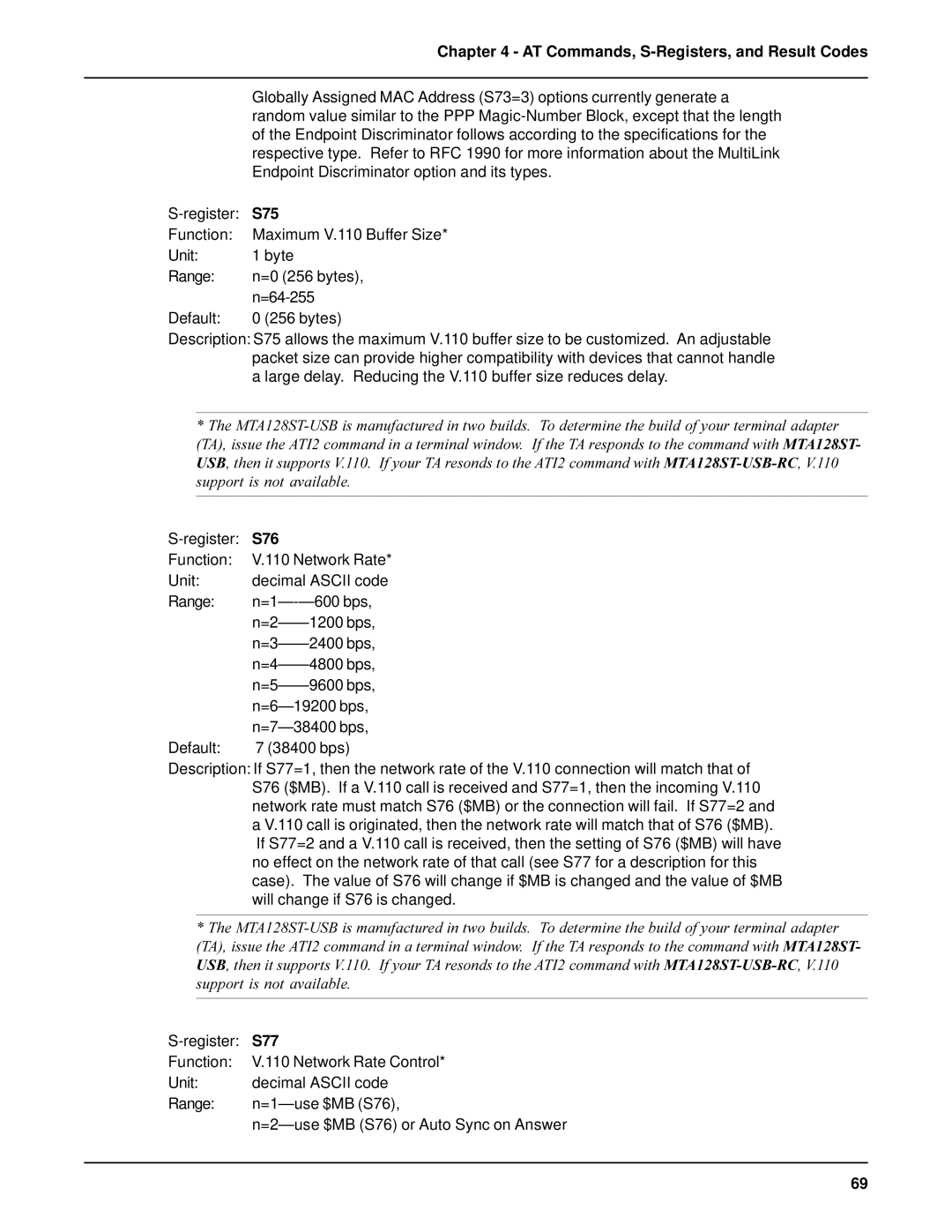
Chapter 4 - AT Commands, S-Registers, and Result Codes
| Globally Assigned MAC Address (S73=3) options currently generate a |
| random value similar to the PPP |
| of the Endpoint Discriminator follows according to the specifications for the |
| respective type. Refer to RFC 1990 for more information about the MultiLink |
| Endpoint Discriminator option and its types. |
S75 | |
Function: | Maximum V.110 Buffer Size* |
Unit: | 1 byte |
Range: | n=0 (256 bytes), |
| |
Default: | 0 (256 bytes) |
Description: S75 allows the maximum V.110 buffer size to be customized. An adjustable packet size can provide higher compatibility with devices that cannot handle a large delay. Reducing the V.110 buffer size reduces delay.
*The
S76 |
| |
Function: | V.110 Network Rate* | |
Unit: | decimal ASCII code | |
Range: | n=1— | |
| 1200 bps, | |
| 2400 bps, | |
| 4800 bps, | |
| 9600 bps, | |
| n=6— 19200 bps, | |
| n=7— 38400 bps, | |
Default: | 7 (38400 bps) | |
Description: If S77=1, then the network rate of the V.110 connection will match that of S76 ($MB). If a V.110 call is received and S77=1, then the incoming V.110 network rate must match S76 ($MB) or the connection will fail. If S77=2 and a V.110 call is originated, then the network rate will match that of S76 ($MB). If S77=2 and a V.110 call is received, then the setting of S76 ($MB) will have no effect on the network rate of that call (see S77 for a description for this case). The value of S76 will change if $MB is changed and the value of $MB will change if S76 is changed.
*The
S77 | |
Function: | V.110 Network Rate Control* |
Unit: | decimal ASCII code |
Range: | n=1— use $MB (S76), |
| n=2— use $MB (S76) or Auto Sync on Answer |
69
